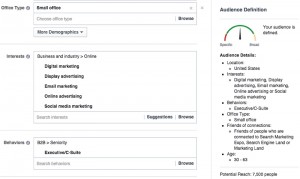By Bob Apollo, Published November 6, 2014
Most CEOs would like to see their sales and marketing teams working more effectively together. Many have “improving sales and marketing alignment” on their must-do list. But are likely to be disappointed by the results – unless they focus on the real problem…
 Sales and marketing alignment is by itself a necessary but not a sufficient condition if the potential of a business is to be realized – because many of the initiatives are largely or exclusively internally focused.
Sales and marketing alignment is by itself a necessary but not a sufficient condition if the potential of a business is to be realized – because many of the initiatives are largely or exclusively internally focused.
Let’s take one simple example: gaining agreement on what a “Marketing Qualified Lead” (MQL) looks like is often touted as one manifestation of achieving sales and marketing alignment – and it’s certainly an important and necessary step.
Documenting and implementing consistent funnel stages and hand-offs, milestones, mutual expectations and performance metrics – and enshrining these in a Service Level Agreement are also important foundations. But they are not enough.
Avoiding “alignment in a vacuum”
The problem with all of these initiatives – laudable though they undoubtedly are – is that they could, and often are, be established in a vacuum. It’s perfectly possible, and worryingly common, for attempts at sales and marketing alignment to ignore the elephant in the room.
The elephant is the customer. You see sales and marketing alignment initiatives – if they are to stand any chance of realising their potential – can’t just be about internal alignment. They have got to be about aligning with the customer, and with how and why they choose to buy.
That’s why I have formed the view – shaped by observing alignment exercises where the operation appeared successful, but the patient remained in poor health – that sales and marketing alignment must start with the customer.
Start with the customer
That requires that we first establish a common consensus about what an ideal customer looks like – and that we agree on the common characteristics of both the organisations and the key stakeholders we most need to engage with.
It requires that we all understand and agree on the issues, trends, and trigger events that might cause our prospects to recognize the need for change – and that we focus both our marketing messages and our sales conversations on these topics.
It means that we need to understand the language our prospects use, the information sources they regards as most credible, and the individuals and communities that they turn to when they are looking to learn more about a new subject.
And, of course, it requires a deep appreciation of the key phases they are likely to go through as they undertake their buying decision journey – and the indicators and milestones that allow us to recognize where they really are in the process.
Requires more than a white-board
None of this can be accomplished in the absence of deep engagement with your customers across both your sales and marketing functions. It certainly can’t be achieved through a few perfunctory internal white-boarding sessions.
You might generate a few useful hypotheses that way, but until and unless you test, measure and refine them through regular and intimate interaction with your customers and prospects, the foundations of your “alignment” will be built on sand.
Achieving true customer alignment undoubtedly requires more effort – and takes longer – than a quick internal sales and marketing alignment fix. And at the end of the day, many of the outcomes might look similar.
A much better outcome
You’ll still end up with your documented funnel stages and hand-offs, your milestones, your mutual expectations, your performance metrics your MQL definitions and your Service Level Agreements.
But you’ll end up with a whole lot more as well – and the confidence that you’ve achieved the most important axis of alignment – the one between your customers and your organization. And it will show in your results.
Business Articles | Business 2 Community
(309)







